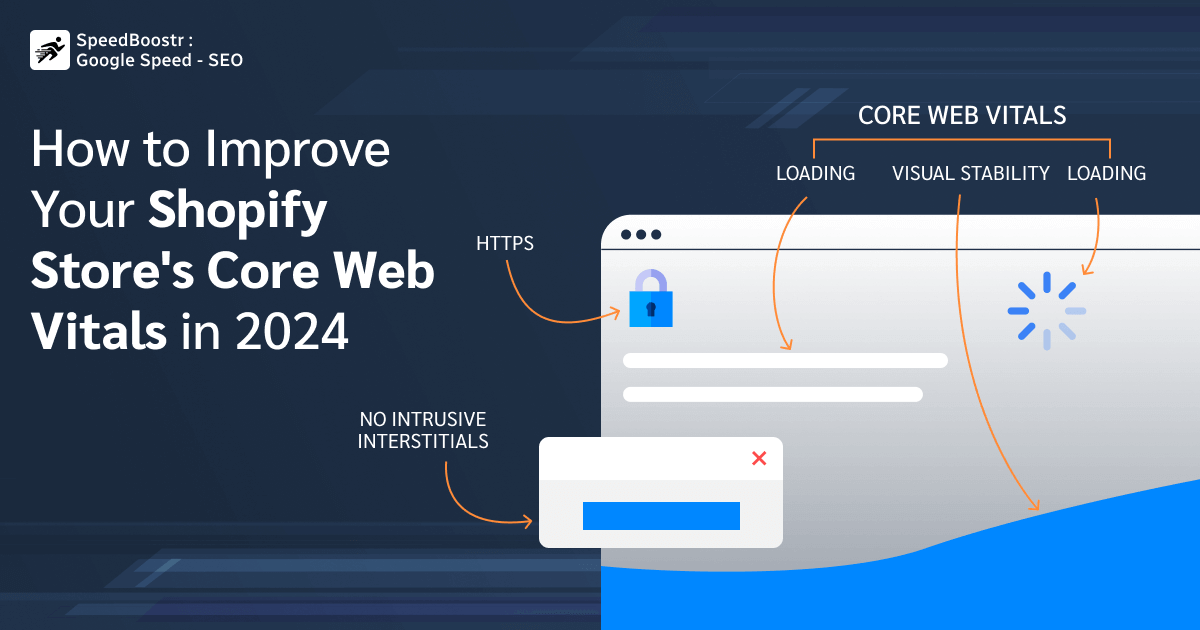
Google generally considers various aspects of websites while giving rankings, such as technical performance or speed. Websites with these attributes rank higher in Google search engine results.
To track your website performance, Google uses three core web vitals metrics, including LCP, FID, and CLS. You can improve your site rankings by improving these web performance metrics.
So, if you are unaware of core web vitals then this blog is for you.
What Are Core Web Vitals?
Core web vitals involve a set of metrics through which Google can measure the page speed, visual stability, and interactivity of your web page. There are three web performance metrics, such as Largest Contentful Paint (LCP), First Input Delay (FID), and Cumulative Layout Shift (CLS).
Based on these metrics, Google can decide which pages to show in search results. By improving these metrics with the help of SEO experts, you can help your website achieve the desired ranking in Google search engine results.
Largest Contentful Paint (LCP):
This metric is used to measure page loading speed. The LCP metric assesses the load times of your web page’s primary content. Users consider the pages with excellent LCP scores to load quickly, thereby improving their browsing experience.
The LCP measures the performance of load times. The best LCP is supposed to take place within 2.5 seconds from when the page starts loading.
First Input Delay(FID):
It is used to measure the interactivity of your web page. FID evaluates how much time it takes for a webpage to respond during the user's first interaction. Delays in responding can make first-time visitors frustrated, ending up abandoning your website. Hence, it is essential to provide users with a seamless experience.
One thing to note is that First Input Delay (FID) has recently been replaced by Interaction to Next Paint (INP) in 2024.
Cumulative Layout Shift:
It is used to measure visual stability. CLS assesses how much a web page’s elements shift during the page loading process. A minimal CLS score ensures a stable page layout, preventing unexpected shifting of elements that might confuse users. Ideally, pages should have a CLS below 0.1.
Why Are Core Web Vitals Important for SEO?
Core web vitals are crucial for SEO as they directly affect user experience on your website. User experience is considered to be an important factor by Google in determining your website's rankings on the SERP.
Tools to Use for Measuring Core Web Vitals
Here are some tools that you can use to measure web core vitals.
Google Search Console:
Google Search Console uses CrUX field data to provide Core Web Vitals performance metrics for using URL or sets of URLs.
Lighthouse:
The Google Lighthouse tool is available for free. It serves you with lab metrics about core web vitals. It provides data, which helps you optimize your website performance and SEO methods.
Google PageSpeed Insights:
This tool has the functionality of both CrUX and Lighthouse that provide field and lab data on core web vitals. With this tool, you can track the website's performance even if you don’t own it.
CrUX Report:
CrUX (ChromeUXReport) hands over field data reported by Chrome users, providing you with insights into how real users experience your site.
What are the best techniques to improve your core web vitals?
Improve FID Score:
When the browser loads JavaScript, users find it difficult to interact with a page, leading to a poor user experience. Hence, it is important to minimize JavaScript to improve user experience and get an optimal FID score.
Make sure to remove unwanted third-party scripts, including Google Analytics, advertisements, and heatmaps, which are responsible for poor website FID scores. Moreover, they also negatively affect FCP.
Use browser caching to enhance the loading speed of content, which allows the user's browser to proceed with JS loading more effectively and efficiently.
Reduce CLS:
Make sure to use set size attribute dimensions for all media elements on the page, such as videos, images, GIFs, and graphics. Setting these attributes allows the user’s browser to precisely measure the space each element uses on the page. It reduces the possibility of unexpected layout shifts while the page is loading.
Allocate the proper space to add elements within your page design. The sudden display of ad elements without defining their space can lead to the layout to disrupted. This disturbance may maximize your CLS score.
keep newly created UI elements at the bottom of the page to prevent any displacement of current content caused by them. It helps place content as per the user’s expected location, which in turn minimizes CLS.
Reduce LCP:
It is no secret that third-party scripts are the reason your website pages load slowly. They generally maximize page load time. The integration of multiple tools, including analytics, ad software, and eCommerce, can cause delays in loading pages.
The selection of perfect hosting can also reduce load times, leading to improved user experience. Moreover, implements lazy loading techniques to compress high-resolution images, ensuring the images load quickly during scrolling down the page.
Lazy loading is beneficial, especially for pages full of visual media like photos, videos, and graphics, as it contributes to enhanced LCP.
You can use Google PageSpeed Insights to identify factors that slow down the LCP of your page.
Conclusion:
Improving Core Web Vitals is essential for enhancing your Shopify store's performance and user experience. By focusing on metrics like LCP, FID, and CLS, you can enhance page loading speed, interactivity, and visual stability, which directly impacts your SEO rankings. Utilizing tools such as Google Search Console, Lighthouse, and Google PageSpeed Insights will help you monitor and improve these metrics effectively.